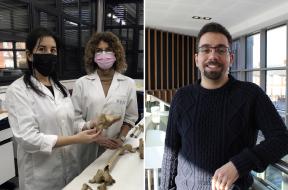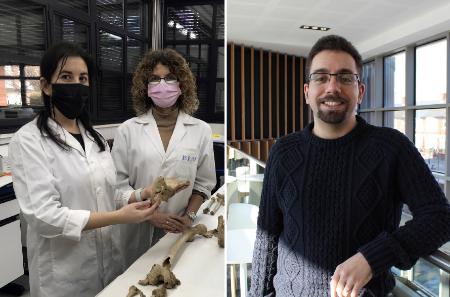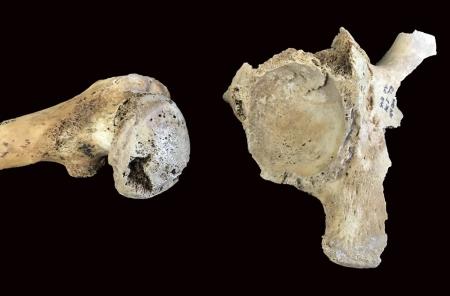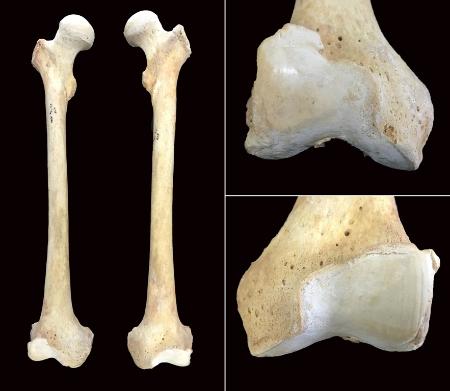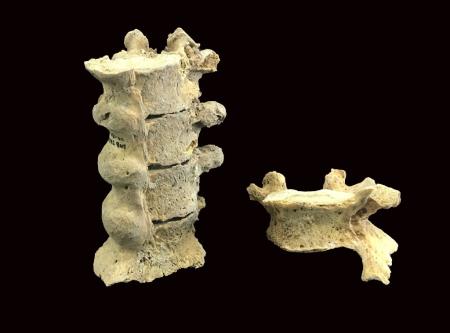Researchers from the University of Oviedo and Cardiff University advocate a technique for analysing pathologies from archaeological remains that, unlike traditional methods, takes account of all data. The research has addressed, by way of example, degenerative joint disease among a medieval and modern population from the necropolis of San Nicolás de Bari in Burgos. It was found that men are significantly more affected by DJD in their extremities than women - possibly due to long journeys on foot
A study published in the American Journal of Physical Anthropology by researchers from the University of Oviedo and Cardiff University has evaluated the use of a number of statistical techniques for analysing data from bioarchaeological contexts. The publication shows that several methods traditionally used to analyse these data are inefficient and lead to the loss or omission of some of the available information. In contrast, applying a specialist statistical technique (Generalised Linear Mixed Models, GLMMs) allows the use of all data when assessing the impact on past populations of factors associated with disease. The article presents a case study analysing the prevalence of degenerative joint disease (DJD) among a medieval and modern population recovered from the necropolis of San Nicolás de Bari in Burgos. The authors of the publication are Carmen Alonso-Llamazares, Beatriz Blanco Márquez and Belén López from the University of Oviedo, and Antonio F. Pardiñas from Cardiff University.
DJD is a chronic condition involving degeneration of cartilage and bone in the joints, and is one of the most common ailments today, with an estimated 50% of people over the age of 60 currently suffering from it. It has been described among all human populations, past and present, as it has a strong relationship with physical activity (if a joint does not move, the pathology does not occur). However, there are other factors such as age, gender and individuals' own genetics that affect both its development and the severity of its manifestation. Thus, for example, due to its chronic nature, it is expected that the incidence of the disease will increase with age.
Palaeopathology is the branch of science that describes and analyses what kind of diseases affected our ancestors. Through the study of its incidence within the population, this discipline helps us to infer lifestyles and social behaviours, enabling us to ascertain, for example, if there was gender differentiation in terms of distribution of tasks and jobs. The use of statistical techniques to make these estimates is therefore a fundamental part of palaeopathological studies. However, they have been criticised for their reliance on "classical" statistics (developed in the early 20th century), such as the Chi-square test and Fisher's test, which require analysing each factor of interest separately. Clinical studies in contemporary populations have shown that the factors associated with DJD and other bone pathologies act together and in an interconnected manner, which means that segregating their analysis may lead to false results. Furthermore, classical statistical approaches ignore the fact that part of the variability observed in palaeopathological data may be due to intrinsic characteristics of individuals - for example genetics, which contribute to the fact that the reaction to external stimuli varies from one subject to another. That is, two people of the same gender and same age, performing the same physical activity, do not necessarily develop the same level of DJD.
In order to offer alternative methods to other researchers working in this discipline, the work led by Alonso-Llamazares evaluates the prevalence of DJD in the six main joints of the human skeleton and in the spine within a Spanish population from the 15th to the 18th centuries. By means of a thorough palaeopathological laboratory study, the presence of DJD was analysed in more than 2,500 bones from 73 individuals, in which their gender and age were also inferred from their skeletal remains. The research team analysed these data using a number of classical statistical methods and GLMMs. The results from all methods showed the strong impact of age on upper joint degeneration in this medieval population. This wear and tear can be interpreted as the consequence of years of intense physical effort on people's arms. This would associate these individuals with work relating to agriculture, crafts and construction work. Furthermore, GLMM analysis is shown to be the only methodology capable of revealing a gender differentiation in the incidence of DJD in the lower extremities, with males being significantly more affected than females. This is undoubtedly a reflection of different types of activity between the genders in the population of Burgos which, for example, associates men with long journeys on foot.

